underbanked
description: those without sufficient access to mainstream financial services
36 results
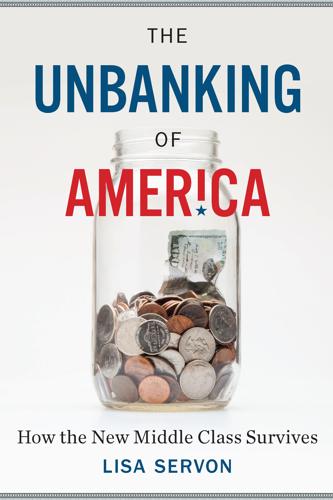
The Unbanking of America: How the New Middle Class Survives
by
Lisa Servon
Published 10 Jan 2017
The Federal Deposit and Insurance Corporation (FDIC) conducts the biannual “National Survey of Unbanked and Underbanked Households.” The survey classifies respondents as “banked” (they use only banks and credit unions), “unbanked” (they have no bank account), or “underbanked” (they have bank accounts but continue to rely on alternative financial services). As of 2013, the year of the FDIC’s most recent survey, approximately 8 percent of Americans were unbanked and another 20 percent were underbanked. The picture looks far worse for people of color. One in five African American households and nearly 18 percent of Latino households are unbanked.
…
It’s time to launch a movement that will pressure the public and private sectors to reform the consumer financial-services industry, in a way that makes financial health attainable and sustainable for all Americans. We need an industry that keeps people’s money safe, provides high-quality, affordable products and services, aligns with our democratic values, and truly serves people, in the best sense of that word. Right now we’re all underbanked, but not in the way Washington believes us to be. We’re underbanked because the banks that hold most of our assets do a lousy job of serving us. Mainstream banking especially doesn’t make sense for many people who are financially insecure. To figure out what current banking trends mean for them, I entered the belly of the beast—a small check-cashing store in the South Bronx. 1 Where Everybody Knows Your Name The sky is inky black when my alarm clock gongs at 5:30 a.m.
…
It’s not easy to talk about money in our culture, and for some, it meant revisiting painful moments in the past and decisions that they wished they hadn’t made, while thinking about a future that seems bleak. I hope we can all benefit from their courage, sharing, and perseverance. Notes Introduction: We’re All Underbanked xiv the percentage of Americans: Susan Burhouse et al., “2013 National Survey of Unbanked and Underbanked Households” (Washington, DC: FDIC, October 2014). https://www.fdic.gov/householdsurvey/2013report.pdf xv Payday lending grew: Eva Wolkowitz, “2013 Financially Underserved Market Study” (Chicago: Center for Financial Services Inclusion, December 10, 2014). http://www.cfsinnovation.com/content/2012-financially-underserved-market-sizing-study#sthash.1QQKl1ou.dpuf xvi A ChexSystems report that: Jessica Silver-Greenberg, “Over a Million Denied Bank Accounts for Past Errors,” New York Times, July 30, 2013. http://dealbook.nytimes.com/2013/07/30/over-a-million-are-denied-bank-accounts-for-past-errors/?
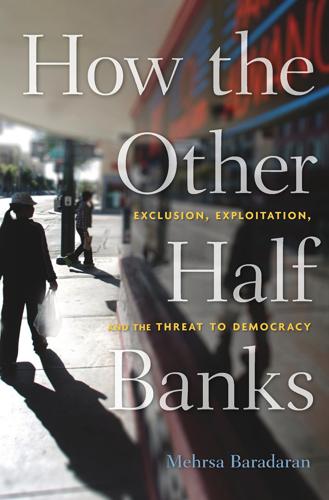
How the Other Half Banks: Exclusion, Exploitation, and the Threat to Democracy
by
Mehrsa Baradaran
Published 5 Oct 2015
Derek Thompson, “When You’re Poor, Money is Expensive,” Atlantic, July 14, 2014, accessed March 17, 2015, m.theatlantic.com/business/archive/2014/07/its-expensive-to-be-poor-money/374361/. 8. Barr, No Slack, 120. 9. FDIC, “2013 FDIC National Survey of Unbanked and Underbanked Households,” October 2014, accessed March 17, 2015, www.fdic.gov/householdsurvey/2013report.pdf; University Neighborhood Housing Program, “Banking in the Bronx: Assessing Options in a Historically Redlined and Underbanked Borough,” April 2012, accessed March 17, 2015, www.unhp.org/pdf/BankingInTheBronx.pdf. 10. “In fact, the ABA says, the annual cost of a checking account is actually $250 to $300.” The American Bankers Association (ABA) claims that the cost of opening an account runs between $150 and $200, and the annual cost of maintaining an account runs between $250 and $300.
…
Danielle Douglas-Gabriel, “How Wal-Mart and Google Could Steal Young Customers from Traditional Banks,” Washington Post, May 27, 2014, accessed March 15, 2015, www.washingtonpost.com/blogs/wonkblog/wp/2014/05/27/how-wal-mart-and-google-could-steal-young-customers-from-traditional-banks/. 77. “Why Does Kenya Lead the World in Mobile Money?,” Economist, May 27, 2013, accessed March 15, 2015, www.economist.com/blogs/economist-explains/2013/05/economist-explains-18. 78. “[Sixty-nine] percent of the unbanked … [and] 88 percent of the underbanked have access to a mobile phone … 39 percent of underbanked consumers have used mobile banking in the past 12 months.” Federal Reserve Board of Governors, “Consumers and Mobile Financial Services 2014,” March 2014: 2, accessed March 15, 2015, www.federalreserve.gov/econresdata/consumers-and-mobile-financial-services-report-201403.pdf. 79.
…
Approximately 70 million Americans do not have a bank account or access to traditional financial services. That is more people than live in California, New York, and Maryland combined. It is more than the total number of people who voted for Barack Obama (or Mitt Romney) in the 2012 election.7 The term “unbanked” or “underbanked” describes a group of people who rely on fringe lenders, but these terms underestimate the problem. An even larger and less quantifiable number of people do have bank accounts but rely primarily on alternative banking services for a variety of reasons.8 In fact, recall that you must have a bank account in order to use a payday lender.
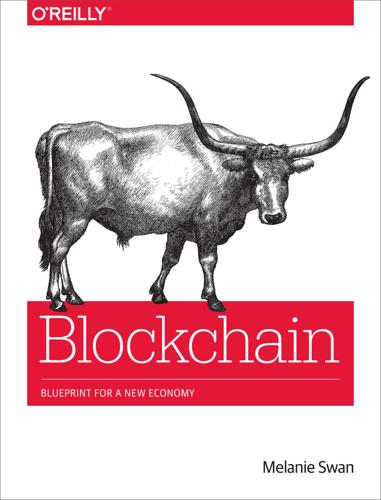
Blockchain: Blueprint for a New Economy
by
Melanie Swan
Published 22 Jan 2014
For example, the Islamic Bank of Bitcoin is investigating ways to conduct Sharia-compliant banking with Bitcoin.92 A key point of Bitcoin neutrality is that the real target market for whom Bitcoin could be most useful is the “unbanked,” individuals who do not have access to traditional banking services for any number of reasons, estimated at 53 percent of the worldwide population.93 Even in the United States, 7.7 percent of households are forecast to be unbanked or underbanked.94 Bitcoin neutrality means access for the unbanked and underbanked, which requires Bitcoin solutions that apply in all low-tech environments, with features like SMS payment, paper wallets, and batched blockchain transactions. Having neutrality-oriented, easy-to-use solutions (the “Twitter of emerging market Bitcoin”) for Bitcoin could trigger extremely fast uptake in underbanked markets, continuing the trend of 31 percent of Kenya’s GDP being spent through mobile phones.95 There are different SMS Bitcoin wallets and delivery mechanisms (like 37Coins96 and Coinapult, and projects like Kipochi97 that are integrated with commonly used emerging-markets mobile finance platforms like M-Pesa.
…
v=BT8FXQN-9-A. 92 Senbonzakura (handle name). “Islamic Bank of Bitcoin.” Bitcoin Forum, June 24, 2011. https://bitcointalk.org/index.php?topic=21732.0. 93 Chaia, A. et al. “Half the World Is Unbanked.” McKinsey & Co, March 2009. http://mckinseyonsociety.com/half-the-world-is-unbanked/. 94 “2013 FDIC National Survey of Unbanked and Underbanked Households,” U.S. Federal Deposit Insurance Corporation, updated October 28, 2014, https://www.fdic.gov/householdsurvey/. 95 Mims, C. “M-Pesa: 31% of Kenya’s GDP Is Spent Through Mobile Phones.” Quartz, February 27, 2013. http://qz.com/57504/31-of-kenyas-gdp-is-spent-through-mobile-phones/. 96 Cawrey, D. “37Coins Plans Worldwide Bitcoin Access with SMS-Based Wallet.”
…
-M2M/IoT Bitcoin Payment Network to Enable the Machine Economy and consensus models, Blockchain AI: Consensus as the Mechanism to Foster “Friendly” AI-Blockchain Consensus Increases the Information Resolution of the Universe extensibility of, Extensibility of Blockchain Technology Concepts for facilitating big data predictive task automation, Blockchain Layer Could Facilitate Big Data’s Predictive Task Automation future applications, Blockchain AI: Consensus as the Mechanism to Foster “Friendly” AI-Blockchain Consensus Increases the Information Resolution of the Universe limitations of (see limitations) organizational capabilities, Blockchain Technology Is a New and Highly Effective Model for Organizing Activity tracking capabilities, Fundamental Economic Principles: Discovery, Value Attribution, and Exchange-Fundamental Economic Principles: Discovery, Value Attribution, and Exchange blockchain-recorded marriage, Decentralized Governance Services BlockCypher, Blockchain Development Platforms and APIs BOINC, DAOs and DACs bond deposit postings, Technical Challenges Brin, David, Freedom of Speech/Anti-Censorship Applications: Alexandria and Ostel BTCjam, Financial Services business model challenges, Business Model Challenges Buttercoin, Financial Services Byrne, Patrick, Financial Services C Campus Cryptocurrency Network, Campuscoin Campuscoin, Campuscoin-Campuscoin censorship, Internet (see decentralized DNS system) Chain, Blockchain Development Platforms and APIs challenges (see see limitations) charity donations, Charity Donations and the Blockchain—Sean’s Outpost China, Relation to Fiat Currency ChromaWallet, Wallet Development Projects Chronobit, Virtual Notary, Bitnotar, and Chronobit Circle Internet Financial, eWallet Services and Personal Cryptosecurity Codius, Financial Services coin drops, Coin Drops as a Strategy for Public Adoption coin mixing, eWallet Services and Personal Cryptosecurity coin, defining, Terminology and Concepts, Currency, Token, Tokenizing Coinapult, Global Public Health: Bitcoin for Contagious Disease Relief Coinapult LOCKS, Relation to Fiat Currency Coinbase, Merchant Acceptance of Bitcoin, Financial Services CoinBeyond, Merchant Acceptance of Bitcoin Coinffeine, Financial Services Coinify, Merchant Acceptance of Bitcoin Coinprism, Wallet Development Projects Coinspace, Crowdfunding CoinSpark, Wallet Development Projects colored coins, Smart Property, Blockchain 2.0 Protocol Projects community supercomputing, Community Supercomputing Communitycoin, Currency, Token, Tokenizing-Communitycoin: Hayek’s Private Currencies Vie for Attention complementary currency systems, Demurrage Currencies: Potentially Incitory and Redistributable concepts, redefining, Terminology and Concepts-Terminology and Concepts consensus models, Blockchain AI: Consensus as the Mechanism to Foster “Friendly” AI-Blockchain Consensus Increases the Information Resolution of the Universe consensus-derived information, Blockchain Consensus Increases the Information Resolution of the Universe contagious disease relief, Global Public Health: Bitcoin for Contagious Disease Relief contracts, Blockchain 2.0: Contracts-The Blockchain as a Path to Artificial Intelligence (see also smart contracts) crowdfunding, Crowdfunding-Crowdfunding financial services, Financial Services-Financial Services marriage, Decentralized Governance Services prediction markets, Bitcoin Prediction Markets smart property, Smart Property-Smart Property wallet development projects, Wallet Development Projects copyright protection, Monegraph: Online Graphics Protection Counterparty, Blockchain 2.0 Protocol Projects, Counterparty Re-creates Ethereum’s Smart Contract Platform Counterparty currency (XCP), Currency, Token, Tokenizing Counterwallet, Wallet Development Projects crowdfunding, Crowdfunding-Crowdfunding cryptocurrencies benefits of, Currency, Token, Tokenizing cryptosecurity, eWallet Services and Personal Cryptosecurity eWallet services, eWallet Services and Personal Cryptosecurity mechanics of, How a Cryptocurrency Works-Merchant Acceptance of Bitcoin merchant acceptance, Merchant Acceptance of Bitcoin cryptosecurity challenges, eWallet Services and Personal Cryptosecurity cryptowallet, Blockchain Neutrality currency, Technology Stack: Blockchain, Protocol, Currency-Regulatory Status, Currency, Token, Tokenizing-Extensibility of Demurrage Concept and Features Campuscoin, Campuscoin-Campuscoin coin drops, Coin Drops as a Strategy for Public Adoption Communitycoin, Communitycoin: Hayek’s Private Currencies Vie for Attention-Communitycoin: Hayek’s Private Currencies Vie for Attention cryptocurrencies, How a Cryptocurrency Works-Merchant Acceptance of Bitcoin decentralizing, Communitycoin: Hayek’s Private Currencies Vie for Attention defining, Currency, Token, Tokenizing-Currency, Token, Tokenizing, Currency: New Meanings demurrage, Demurrage Currencies: Potentially Incitory and Redistributable-Extensibility of Demurrage Concept and Features double-spend problem, The Double-Spend and Byzantine Generals’ Computing Problems fiat currency, Relation to Fiat Currency-Relation to Fiat Currency monetary and nonmonetary, Currency Multiplicity: Monetary and Nonmonetary Currencies-Currency Multiplicity: Monetary and Nonmonetary Currencies new meanings, Currency: New Meanings technology stack, Technology Stack: Blockchain, Protocol, Currency-Technology Stack: Blockchain, Protocol, Currency currency mulitplicity, Currency Multiplicity: Monetary and Nonmonetary Currencies-Currency Multiplicity: Monetary and Nonmonetary Currencies D DAOs, DAOs and DACs-DAOs and DACs DAOs/DACs, DAOs and DACs-DAOs and DACs, Batched Notary Chains as a Class of Blockchain Infrastructure, Blockchain Government Dapps, Dapps-Dapps, Extensibility of Demurrage Concept and Features Dark Coin, eWallet Services and Personal Cryptosecurity dark pools, Technical Challenges Dark Wallet, eWallet Services and Personal Cryptosecurity DASs, DASs and Self-Bootstrapped Organizations DDP, Crowdfunding decentralization, Smart Contracts, Centralization-Decentralization Tension and Equilibrium decentralized applications (Dapps), Dapps-Dapps decentralized autonomous organization/corporation (DAO) (see DAOs/DACs) decentralized autonomous societies (DASs), DASs and Self-Bootstrapped Organizations decentralized autonomy, eWallet Services and Personal Cryptosecurity decentralized DNS, Namecoin: Decentralized Domain Name System-Decentralized DNS Functionality Beyond Free Speech: Digital Identity challenges of, Challenges and Other Decentralized DNS Services and digital identity, Decentralized DNS Functionality Beyond Free Speech: Digital Identity-Decentralized DNS Functionality Beyond Free Speech: Digital Identity DotP2P, Challenges and Other Decentralized DNS Services decentralized file storage, Blockchain Ecosystem: Decentralized Storage, Communication, and Computation decentralized secure file serving, Blockchain Ecosystem: Decentralized Storage, Communication, and Computation deeds, Decentralized Governance Services demurrage currencies, Demurrage Currencies: Potentially Incitory and Redistributable-Extensibility of Demurrage Concept and Features action-incitory features, Extensibility of Demurrage Concept and Features limitations of, Demurrage Currencies: Potentially Incitory and Redistributable digital art, Digital Art: Blockchain Attestation Services (Notary, Intellectual Property Protection)-Personal Thinking Blockchains (see also blockchain attestation services) hashing and timestamping, Hashing Plus Timestamping-Limitations online graphics protection, Monegraph: Online Graphics Protection digital cryptography, Ethereum: Turing-Complete Virtual Machine, Public/Private-Key Cryptography 101 digital divide, defining, Digital Divide of Bitcoin digital identity verification, Blockchain 2.0: Contracts, Smart Property, Wallet Development Projects, Digital Identity Verification-Digital Divide of Bitcoin, Limitations, Decentralized Governance Services, Liquid Democracy and Random-Sample Elections, Blockchain Learning: Bitcoin MOOCs and Smart Contract Literacy, Privacy Challenges for Personal Records dispute resolution, PrecedentCoin: Blockchain Dispute Resolution DIYweathermodeling, Community Supercomputing DNAnexus, Genomecoin, GenomicResearchcoin Dogecoin, Technology Stack: Blockchain, Protocol, Currency, Currency Multiplicity: Monetary and Nonmonetary Currencies, Scandals and Public Perception DotP2P, Challenges and Other Decentralized DNS Services double-spend problem, The Double-Spend and Byzantine Generals’ Computing Problems DriveShare, DAOs and DACs dynamic redistribution of currency (see demurrage currency) E education (see learning and literacy) Electronic Freedom Foundation (EFF), Distributed Censorship-Resistant Organizational Models EMR (electronic medical record) system, EMRs on the Blockchain: Personal Health Record Storage Ethereum, Crowdfunding, Blockchain 2.0 Protocol Projects, Blockchain Ecosystem: Decentralized Storage, Communication, and Computation, Ethereum: Turing-Complete Virtual Machine-Counterparty Re-creates Ethereum’s Smart Contract Platform eWallet services, eWallet Services and Personal Cryptosecurity ExperimentalResultscoin, Blockchain Academic Publishing: Journalcoin F Fairlay, Bitcoin Prediction Markets fiat currency, Relation to Fiat Currency-Relation to Fiat Currency file serving, Blockchain Ecosystem: Decentralized Storage, Communication, and Computation, Ethereum: Turing-Complete Virtual Machine file storage, Blockchain Ecosystem: Decentralized Storage, Communication, and Computation financial services, Regulatory Status, Financial Services-Financial Services, Blockchain Technology Is a New and Highly Effective Model for Organizing Activity, Government Regulation Fitbit, Personal Thinking Blockchains, Blockchain Health Research Commons, Extensibility of Demurrage Concept and Features Florincoin, Freedom of Speech/Anti-Censorship Applications: Alexandria and Ostel Folding@Home, DAOs and DACs, Blockchain Science: Gridcoin, Foldingcoin, Community Supercomputing franculates, Blockchain Government freedom of speech, Namecoin: Decentralized Domain Name System, Freedom of Speech/Anti-Censorship Applications: Alexandria and Ostel (see also decentralized DNS system) Freicoin, Demurrage Currencies: Potentially Incitory and Redistributable fundraising (see crowdfunding) futarchy, Futarchy: Two-Step Democracy with Voting + Prediction Markets-Futarchy: Two-Step Democracy with Voting + Prediction Markets G GBIcoin, Demurrage Currencies: Potentially Incitory and Redistributable GBIs (Guaranteed Basic Income initiatives), Demurrage Currencies: Potentially Incitory and Redistributable Gems, Blockchain Development Platforms and APIs, Dapps Genecoin, Blockchain Genomics Genomecoin, Genomecoin, GenomicResearchcoin Genomic Data Commons, Genomecoin, GenomicResearchcoin genomic sequencing, Blockchain Genomics 2.0: Industrialized All-Human-Scale Sequencing Solution-Genomecoin, GenomicResearchcoin GenomicResearchcoin, Genomecoin, GenomicResearchcoin genomics, consumer, Blockchain Genomics-Genomecoin, GenomicResearchcoin Git, Blockchain Ecosystem: Decentralized Storage, Communication, and Computation GitHub, Blockchain Academic Publishing: Journalcoin, Currency Multiplicity: Monetary and Nonmonetary Currencies global public health, Global Public Health: Bitcoin for Contagious Disease Relief GoCoin, Financial Services GoToLunchcoin, Terminology and Concepts governance, Blockchain Government-Societal Maturity Impact of Blockchain Governance decentralized services, Decentralized Governance Services-Decentralized Governance Services dispute resolution, PrecedentCoin: Blockchain Dispute Resolution futarchy, Futarchy: Two-Step Democracy with Voting + Prediction Markets-Futarchy: Two-Step Democracy with Voting + Prediction Markets Liquid Democracy system, Liquid Democracy and Random-Sample Elections-Liquid Democracy and Random-Sample Elections personalized governance services, Blockchain Government random-sample elections, Random-Sample Elections societal maturity impact of blockchain governance, Societal Maturity Impact of Blockchain Governance government regulation, Regulatory Status, Government Regulation-Government Regulation Gridcoin, Blockchain Science: Gridcoin, Foldingcoin-Blockchain Science: Gridcoin, Foldingcoin H hashing, Hashing Plus Timestamping-Limitations, Batched Notary Chains as a Class of Blockchain Infrastructure, Technical Challenges Hayek, Friedrich, Communitycoin: Hayek’s Private Currencies Vie for Attention, Demurrage Currencies: Potentially Incitory and Redistributable, Conclusion, The Blockchain Is an Information Technology health, Blockchain Health-Virus Bank, Seed Vault Backup as demurrage currency, Extensibility of Demurrage Concept and Features doctor vendor RFP services, Doctor Vendor RFP Services and Assurance Contracts health notary services, Blockchain Health Notary health research commons , Blockchain Health Research Commons health spending, Healthcoin healthcare decision making and advocacy, Liquid Democracy and Random-Sample Elections personal health record storage, EMRs on the Blockchain: Personal Health Record Storage virus bank and seed vault backup, Virus Bank, Seed Vault Backup Healthcoin, Healthcoin, Demurrage Currencies: Potentially Incitory and Redistributable I identity authentication, eWallet Services and Personal Cryptosecurity, Blockchain 2.0: Contracts, Smart Property, Smart Property, Wallet Development Projects, Digital Identity Verification-Digital Divide of Bitcoin, Limitations, Decentralized Governance Services, Liquid Democracy and Random-Sample Elections, Blockchain Learning: Bitcoin MOOCs and Smart Contract Literacy, Privacy Challenges for Personal Records Indiegogo, Crowdfunding, Dapps industry scandals, Scandals and Public Perception infrastructure needs and issues, Technical Challenges inheritance gifts, Smart Contracts intellectual property, Monegraph: Online Graphics Protection (see also digital art) Internet administration, Distributed Censorship-Resistant Organizational Models Internet Archive, Blockchain Ecosystem: Decentralized Storage, Communication, and Computation, Personal Thinking Blockchains Internet censorship prevention (see Decentralized DNS system) Intuit Quickbooks, Merchant Acceptance of Bitcoin IP protection, Hashing Plus Timestamping IPFS project, Blockchain Ecosystem: Decentralized Storage, Communication, and Computation J Johnston, David, Blockchain Technology Could Be Used in the Administration of All Quanta Journalcoin, Blockchain Academic Publishing: Journalcoin Judobaby, Crowdfunding justice applications for censorship-resistant organizational models, Distributed Censorship-Resistant Organizational Models-Distributed Censorship-Resistant Organizational Models digital art, Digital Art: Blockchain Attestation Services (Notary, Intellectual Property Protection)-Personal Thinking Blockchains (see also digital art, blockchain attestation services) digital identity verification, Blockchain 2.0: Contracts, Smart Property, Wallet Development Projects, Digital Identity Verification-Digital Divide of Bitcoin, Limitations, Decentralized Governance Services, Liquid Democracy and Random-Sample Elections, Blockchain Learning: Bitcoin MOOCs and Smart Contract Literacy, Privacy Challenges for Personal Records freedom of speech/anti-censorship, Freedom of Speech/Anti-Censorship Applications: Alexandria and Ostel governance, Blockchain Government-Societal Maturity Impact of Blockchain Governance (see also governance) Namecoin, Namecoin: Decentralized Domain Name System-Decentralized DNS Functionality Beyond Free Speech: Digital Identity, Monegraph: Online Graphics Protection (see also decentralized DNS) K Kickstarter, Crowdfunding, Community Supercomputing Kipochi, Blockchain Neutrality, Global Public Health: Bitcoin for Contagious Disease Relief, Blockchain Learning: Bitcoin MOOCs and Smart Contract Literacy Koinify, Crowdfunding, Dapps Kraken, Financial Services L latency, Blockchain 2.0 Protocol Projects, Technical Challenges, Technical Challenges, Scandals and Public Perception LaZooz, Dapps, Campuscoin, Extensibility of Demurrage Concept and Features Learncoin, Learncoin learning and literacy, Blockchain Learning: Bitcoin MOOCs and Smart Contract Literacy-Learning Contract Exchanges learning contract exchanges, Learning Contract Exchanges Ledra Capital, Blockchain 2.0: Contracts, Ledra Capital Mega Master Blockchain List legal implications crowdfunding, Crowdfunding smart contracts, Smart Contracts lending, trustless, Smart Property Lighthouse, Crowdfunding limitations, Limitations-Overall: Decentralization Trends Likely to Persist business model challenges, Business Model Challenges government regulation, Government Regulation-Government Regulation personal records privacy challenges, Privacy Challenges for Personal Records scandals and public perception, Scandals and Public Perception-Scandals and Public Perception technical challenges, Technical Challenges-Technical Challenges Liquid Democracy system, Liquid Democracy and Random-Sample Elections-Liquid Democracy and Random-Sample Elections Litecoin, Technology Stack: Blockchain, Protocol, Currency, Technology Stack: Blockchain, Protocol, Currency, Freedom of Speech/Anti-Censorship Applications: Alexandria and Ostel, Currency Multiplicity: Monetary and Nonmonetary Currencies, Technical Challenges literacy (see learning and literacy) LTBcoin, Wallet Development Projects, Currency, Token, Tokenizing M M2M/IoT infrastructure, M2M/IoT Bitcoin Payment Network to Enable the Machine Economy, Blockchain Development Platforms and APIs, Blockchain Academic Publishing: Journalcoin-The Blockchain Is Not for Every Situation, The Blockchain Is an Information Technology Maidsafe, Blockchain Ecosystem: Decentralized Storage, Communication, and Computation, Technical Challenges Manna, Crowdfunding marriage, blockchain recorded, Decentralized Governance Services Mastercoin, Blockchain 2.0 Protocol Projects mechanics of cryptocurrencies, How a Cryptocurrency Works Medici, Financial Services mega master blockchain list, Ledra Capital Mega Master Blockchain List-Ledra Capital Mega Master Blockchain List Melotic, Crowdfunding, Wallet Development Projects merchant acceptance, Merchant Acceptance of Bitcoin merchant payment fees, Summary: Blockchain 1.0 in Practical Use messaging, Ethereum: Turing-Complete Virtual Machine, Dapps, Challenges and Other Decentralized DNS Services, Technical Challenges MetaDisk, DAOs and DACs mindfiles, Personal Thinking Blockchains MIT Bitcoin Project, Campuscoin Monegraph, Monegraph: Online Graphics Protection money (see currency) MOOCs (massive open online courses), Blockchain Learning: Bitcoin MOOCs and Smart Contract Literacy Moroz, Tatiana, Communitycoin: Hayek’s Private Currencies Vie for Attention multicurrency systems, Demurrage Currencies: Potentially Incitory and Redistributable N Nakamoto, Satoshi, Blockchain 2.0: Contracts, Blockchain 2.0: Contracts Namecoin, Namecoin: Decentralized Domain Name System-Decentralized DNS Functionality Beyond Free Speech: Digital Identity, Monegraph: Online Graphics Protection Nationcoin, Coin Drops as a Strategy for Public Adoption, Demurrage Currencies: Potentially Incitory and Redistributable notary chains, Batched Notary Chains as a Class of Blockchain Infrastructure notary services, Hashing Plus Timestamping, Blockchain Health Notary NSA surveillance, Freedom of Speech/Anti-Censorship Applications: Alexandria and Ostel NXT, Technology Stack: Blockchain, Protocol, Currency, Blockchain 2.0 Protocol Projects O offline wallets, Technical Challenges OneName, Digital Identity Verification-Digital Identity Verification OneWallet, Wallet Development Projects online graphics protection, Monegraph: Online Graphics Protection-Monegraph: Online Graphics Protection Open Assets, Blockchain 2.0 Protocol Projects Open Transactions, Blockchain 2.0 Protocol Projects OpenBazaar, Dapps, Government Regulation Ostel, Freedom of Speech/Anti-Censorship Applications: Alexandria and Ostel P passports, Decentralized Governance Services PayPal, The Double-Spend and Byzantine Generals’ Computing Problems, Financial Services, Distributed Censorship-Resistant Organizational Models peer-to-peer lending, Financial Services Peercoin, Technology Stack: Blockchain, Protocol, Currency personal cryptosecurity, eWallet Services and Personal Cryptosecurity personal data rights, Blockchain Genomics personal mindfile blockchains, Personal Thinking Blockchains personal thinking chains, Personal Thinking Blockchains-Personal Thinking Blockchains physical asset keys, Blockchain 2.0: Contracts, Smart Property plagiarism detection/avoidance, Blockchain Academic Publishing: Journalcoin Precedent, PrecedentCoin: Blockchain Dispute Resolution, Terminology and Concepts prediction markets, Bitcoin Prediction Markets, DASs and Self-Bootstrapped Organizations, Decentralized Governance Services, Futarchy: Two-Step Democracy with Voting + Prediction Markets-Futarchy: Two-Step Democracy with Voting + Prediction Markets Predictious, Bitcoin Prediction Markets predictive task automation, Blockchain Layer Could Facilitate Big Data’s Predictive Task Automation privacy challenges, Privacy Challenges for Personal Records private key, eWallet Services and Personal Cryptosecurity Proof of Existence, Proof of Existence-Proof of Existence proof of stake, Blockchain 2.0 Protocol Projects, PrecedentCoin: Blockchain Dispute Resolution, Technical Challenges proof of work, PrecedentCoin: Blockchain Dispute Resolution, Technical Challenges-Technical Challenges property ownership, Smart Property property registration, Decentralized Governance Services public documents registries, Decentralized Governance Services public health, Blockchain Ecosystem: Decentralized Storage, Communication, and Computation, Global Public Health: Bitcoin for Contagious Disease Relief public perception, Scandals and Public Perception-Scandals and Public Perception public/private key cryptography, Public/Private-Key Cryptography 101-Public/Private-Key Cryptography 101 publishing, academic, Blockchain Academic Publishing: Journalcoin-Blockchain Academic Publishing: Journalcoin pull technology, eWallet Services and Personal Cryptosecurity push technology, eWallet Services and Personal Cryptosecurity R random-sample elections, Random-Sample Elections Realcoin, Relation to Fiat Currency redistribution of currency (see demurrage currency) regulation, Government Regulation-Government Regulation regulatory status, Regulatory Status reputation vouching, Ethereum: Turing-Complete Virtual Machine Researchcoin, Blockchain Academic Publishing: Journalcoin REST APIs, Technical Challenges Ripple, Technology Stack: Blockchain, Protocol, Currency, Relation to Fiat Currency, Blockchain 2.0 Protocol Projects Ripple Labs, Financial Services Roadcoin, Blockchain Government S Saldo.mx, Blockchain Neutrality scandals, Scandals and Public Perception science, Blockchain Science: Gridcoin, Foldingcoin-Charity Donations and the Blockchain—Sean’s Outpost community supercomputing, Community Supercomputing global public health, Global Public Health: Bitcoin for Contagious Disease Relief Sean's Outpost, Charity Donations and the Blockchain—Sean’s Outpost secret messaging, Ethereum: Turing-Complete Virtual Machine security issues, Technical Challenges self-bootstrapped organizations, DASs and Self-Bootstrapped Organizations self-directing assets, Automatic Markets and Tradenets self-enforced code, Smart Property self-sufficiency, Smart Contracts SETI@home, Blockchain Science: Gridcoin, Foldingcoin, Community Supercomputing size and bandwidth, Technical Challenges smart contracts, Smart Contracts-Smart Contracts, Smart Contract Advocates on Behalf of Digital Intelligence automatic markets and tradenets, Automatic Markets and Tradenets Counterparty, Counterparty Re-creates Ethereum’s Smart Contract Platform DAOs/DACs, DAOs and DACs-DAOs and DACs Dapps, Dapps-Dapps DASs, DASs and Self-Bootstrapped Organizations Ethereum, Ethereum: Turing-Complete Virtual Machine increasingly autonomous, Dapps, DAOs, DACs, and DASs: Increasingly Autonomous Smart Contracts-Automatic Markets and Tradenets smart literacy contracts, Blockchain Learning: Bitcoin MOOCs and Smart Contract Literacy-Learning Contract Exchanges smart property, Smart Property-Smart Property, Monegraph: Online Graphics Protection smartwatch, Extensibility of Demurrage Concept and Features Snowden, Edward, Distributed Censorship-Resistant Organizational Models social contracts, Smart Contracts social network currencies, Currency Multiplicity: Monetary and Nonmonetary Currencies Stellar, Blockchain Development Platforms and APIs stock market, Financial Services Storj, Blockchain Ecosystem: Decentralized Storage, Communication, and Computation, Dapps, Technical Challenges Stripe, Blockchain Development Platforms and APIs supercomputing, Community Supercomputing Svalbard Global Seed Vault, Virus Bank, Seed Vault Backup Swancoin, Smart Property swaps exchange, Financial Services Swarm, Crowdfunding, Dapps Swarm (Ethereum), Ethereum: Turing-Complete Virtual Machine Swarmops, Crowdfunding T Tatianacoin, Communitycoin: Hayek’s Private Currencies Vie for Attention technical challenges, Technical Challenges-Technical Challenges Tendermint, Technical Challenges Tera Exchange, Financial Services terminology, Terminology and Concepts-Terminology and Concepts 37Coins, Global Public Health: Bitcoin for Contagious Disease Relief throughput, Technical Challenges timestamping, Hashing Plus Timestamping-Limitations titling, Decentralized Governance Services tradenets, Automatic Markets and Tradenets transaction fees, Summary: Blockchain 1.0 in Practical Use Tribecoin, Coin Drops as a Strategy for Public Adoption trustless lending, Smart Property Truthcoin, Futarchy: Two-Step Democracy with Voting + Prediction Markets Turing completeness, Ethereum: Turing-Complete Virtual Machine Twister, Dapps Twitter, Monegraph: Online Graphics Protection U Uber, Government Regulation unbanked/underbanked markets, Blockchain Neutrality usability issues, Technical Challenges V value chain composition, How a Cryptocurrency Works versioning issues, Technical Challenges Virtual Notary, Virtual Notary, Bitnotar, and Chronobit voting and prediction, Futarchy: Two-Step Democracy with Voting + Prediction Markets-Futarchy: Two-Step Democracy with Voting + Prediction Markets W wallet APIs, Blockchain Development Platforms and APIs wallet companies, Wallet Development Projects wallet software, How a Cryptocurrency Works wasted resources, Technical Challenges Wayback Machine, Blockchain Ecosystem: Decentralized Storage, Communication, and Computation Wedbush Securities, Financial Services Whatevercoin, Terminology and Concepts WikiLeaks, Distributed Censorship-Resistant Organizational Models Wikinomics, Community Supercomputing World Citizen project, Decentralized Governance Services X Xapo, eWallet Services and Personal Cryptosecurity Z Zennet Supercomputer, Community Supercomputing Zooko's Triangle, Decentralized DNS Functionality Beyond Free Speech: Digital Identity About the Author Melanie Swan is the Founder of the Institute for Blockchain Studies and a Contemporary Philosophy MA candidate at Kingston University London and Université Paris VIII.
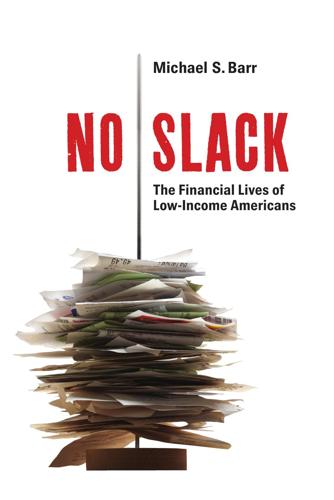
No Slack: The Financial Lives of Low-Income Americans
by
Michael S. Barr
Published 20 Mar 2012
Many low- and moderate-income families with bank accounts regularly rely on high-cost nonbank providers to conduct much of their financial business—such as cashing checks, buying money orders, or taking out payday loans (Barr 2009; Rhine and others 2001). Recent literature sometimes refers to these households 12864-01_CH01_2ndPgs.indd 3 3/23/12 11:54 AM 4 michael s. barr as “underbanked,” although that of course assumes the outcome of the empirical analysis is that these households need more banking. The high costs of alternative financial services raise several concerns. First, the costs of these basic financial transactions reduce take-home pay (Bachelder and Ditzion 2000; Kennickell, Starr-McCluer, and Surette 2000).
…
Farley, Reynolds, Sheldon Danziger, and Harry J. Holzer. 2000. Detroit Divided. New York: Russell Sage Foundation. Fay, Scott, Erik Hurst, and Michelle J. White. 2002. “The Household Bankruptcy Decision.” American Economic Review 92:706–18. FDIC (Federal Deposit Insurance Corporation). 2009. FDIC National Survey of Unbanked and Underbanked Households (www.fdic.gov/householdsurvey/full_report.pdf). FRS (Federal Reserve System). 2010. The 2010 Federal Reserve Payments Study (www. frbservices.org/files/communications/pdf/press/2010_payments_study.pdf). FRTIB (Federal Retirement Thrift Investment Board). 2007. Thrift Savings Plan Participant Survey Results, 2006–07 (www.frtib.gov/pdf/FOIA/2006-TSP-Survey-Results.pdf).
…
Pawnshops, check cashers, rent-to-own stores, tax-refund lenders, and other AFS providers are often the dominant means for LMI households to access financial services in their neighborhoods, but such services come at a high cost and leave these households with little opportunity to save. Many more low- and moderate-income families who have bank accounts also rely on high-cost AFS providers to conduct much of their financial business— such as cashing checks, buying money orders, paying bills, or taking out payday loans. One might think of these families as “underbanked,” in the sense that formal financial institutions are not offering them the products and services they need in their daily lives, even though they have bank accounts. Such families use a mix of mainstream and alternative providers. Far too little attention has been paid to the ways in which even banked LMI households are ill served by the financial system.
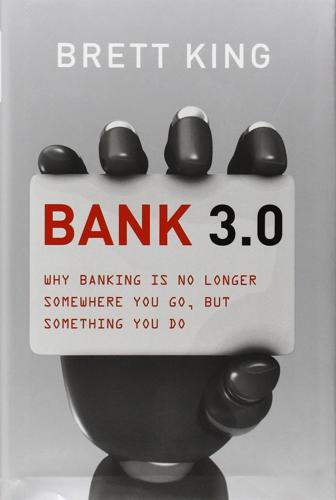
Bank 3.0: Why Banking Is No Longer Somewhere You Go but Something You Do
by
Brett King
Published 26 Dec 2012
As an industry, this business has grown from $2.7 billion in 2005 to $202 billion in 2012. In November 2011, the Center for Financial Services Innovation (CFSI) released new data about the 2010 underbanked market. The research found that: Underbanked consumers in the US generated approximately $45 billion in fee and interest revenue for financial services providers in 2010. The total dollar volume of the underbanked marketplace in 2010 was approximately $455 billion in principal borrowed, dollars transacted, and deposits held. The market has shown strong growth in certain segments: payment services grew by six per cent from 2009 to 2010; credit services grew by two per cent in the same period.
…
(NYSE: NMX) 40 Hong Kong Securities and Futures Commission 41 UBS Wealth Management division now has mortgage approvals for clients down to minutes, and they’re seeking instant approval capability in the near term 42 Estimates range from close to 30 million (8 million unbanked and 18 million underbanked) from census and FDIC data (http://www.fdic.gov/householdsurvey/), to estimates from the Financial Times and Lexis Nexis which put the numbers closer to 70 million (http://insights.lexisnexis.com/creditrisk/2012/04/16/the-population-dynamics-and-credit-quality-of-the-underbanked-market/)) 43 Wall Street Journal, 17 January, 2012, “Starbucks Sees New Growth on the Card”—http://online.wsj.com/article/SB10001424052970203735304577165001653083914.html 44 Starbucks Chapter 2 The ROI of Great Customer Experience As we’ve already identified, we’re seeing a sea-change shift in banking behaviour.
…
The first is simply changing behaviour with respect to where and how the consumer shops for financial service products. The second is the proliferation of alternatives to traditional financial service organisations. There’s a growing group of consumers in the United States who have no checking/current or savings account, and they number in the tens of millions.42 This group of unbanked or underbanked is increasing in size instead of decreasing, as conventional wisdom would dictate. Ron Shevlin from Aité Research Group aptly coined the word “de-banked” to describe the behaviour of this growing group of hyperconnected consumers who are abandoning traditional banking relationships. So how can they survive without a bank account?

Blockchain Revolution: How the Technology Behind Bitcoin Is Changing Money, Business, and the World
by
Don Tapscott
and
Alex Tapscott
Published 9 May 2016
Trading is the buying and selling of assets and financial instruments for the purpose of investing, speculating, hedging, and arbitraging and includes the posttrade life cycle of clearing, settling, and storing value. Blockchain cuts settlement times on all transactions from days and weeks to minutes and seconds. This speed and efficiency creates opportunities for unbanked and underbanked people to participate in wealth creation. 6. Funding and Investing: Investing in an asset, company, or new enterprise gives an individual the opportunity to earn a return, in the form of capital appreciation, dividends, interest, rents, or some combination. The industry makes markets: matching investors with entrepreneurs and business owners at every stage of growth—from angels to IPOs and beyond.
…
Exchanging Value—speculating, hedging, and arbitraging. Matching orders, clearing trades, collateral management and valuation, settlement and custody Blockchain takes settlement times on all transactions from days and weeks to minutes and seconds. This speed and efficiency also creates opportunities for unbanked and underbanked to participate in wealth creation Investment, wholesale banking, foreign exchange traders, hedge funds, pension funds, retail brokerage, clearinghouses, stock, futures, commodities exchanges; commodities brokerages, central banks, regulators 6. Funding and Investing in an Asset, Company, Start-up—capital appreciation, dividends, interest, rents, or some combination New models for peer-to-peer financing, recording of corporate actions such as dividends paid automatically through smart contracts.
…
They can share these digital IDs granularly—that is, share only very specific information about their identity—to facilitate more interactions that will likely lead to their own personal economic growth and prosperity. David Birch, a cryptographer and blockchain theorist, summed it up: “Identity is the new money.”25 Consider the possibilities: the underbanked of the world can enfranchise themselves as they interact with microlending outfits. Potential vendors or lenders can track their usage and repayment of tiny loans, previously unfeasible, on the blockchain rather than rely on some credit score. “Once a previously unbanked person pays back a microloan, they are on their way to securing more and larger loans to build their businesses,”26 said Lubin.
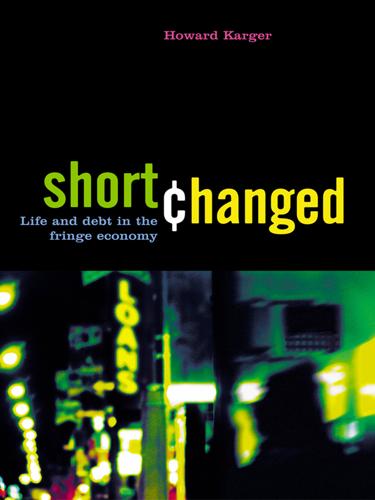
Shortchanged: Life and Debt in the Fringe Economy
by
Howard Karger
Published 9 Sep 2005
Because the unbanked have no formal ties to mainstream financial institutions, they can’t secure traditional credit, so they turn to the fringe sector for check cashing, bill paying, short-term payroll loans, furniture and appliance rentals, and a host of other financial services involving high fees and interest rates. When the unbanked are combined with the similarly large number of people who are classified as “underbanked”—those who don’t utilize or qualify for bank services beyond maintaining an account—the market for fringe services is even larger. According to the U.S. General Accounting Office, as many as 56 million adult Americans—about 28% of all adults—don’t have a bank account. Almost 12 million U.S. households (one-fourth of all low-income families) have no relationship with a bank, savings institution, credit union, or other mainstream financial-services provider.2 Most of the unbanked say they lack a checking account because (1) they don’t write enough checks to warrant one, (2) they don’t have any month-to-month savings to deposit, (3) they can’t afford high bank fees, (4) they can’t meet minimum bank balance requirements, (5) they want to keep their financial records private, and (6) they are uncomfortable dealing with banks.
…
Additionally, if legitimate consumer credit counseling agencies received government funding for consumer education, it would help wean them from their dependence on the Fair Share contributions of the credit card industry. THE NEED FOR MAINSTREAM BANKS TO SERVE THE POOR Mainstream financial institutions have several important reasons for reaching underbanked and unbanked populations. For instance, banks that develop relationships with low-income consumers by providing even rudimentary services could soon foster new full-service customers. Maintaining bank branches in poor areas, even if they weren’t as profitable as those in higher-income ones, would facilitate better community relations and improve the banks’ ratings under the Community Reinvestment Act (CRA).10 Transitioning into the financial mainstream would help low-income and credit-challenged consumers avoid carrying large amounts of cash (check-cashing outlets are notorious magnets for muggers and street predators) and would be likely to reduce their overall costs for financial transactions.
…
Maintaining bank branches in poor areas, even if they weren’t as profitable as those in higher-income ones, would facilitate better community relations and improve the banks’ ratings under the Community Reinvestment Act (CRA).10 Transitioning into the financial mainstream would help low-income and credit-challenged consumers avoid carrying large amounts of cash (check-cashing outlets are notorious magnets for muggers and street predators) and would be likely to reduce their overall costs for financial transactions. Joining the economic mainstream would also help low-income households build savings and improve their credit scores, thereby lowering their costs for financial services and gaining them access to lower-cost sources of credit. To help underbanked and unbanked households to make this transition, banks must develop low-cost and innovative financial products and services. For example, in low-income neighborhoods banks can open small branches that have flexible hours, including nights and weekends. (One of the attractions of the fringe economy is convenience: most check cashers and payday lenders are open on weekends and often late into the night.

The Color of Money: Black Banks and the Racial Wealth Gap
by
Mehrsa Baradaran
Published 14 Sep 2017
Richard Thaler and Cass Sunstein found that blacks pay on average of $425 more for loans than white customers.87 Most black neighborhoods are “banking deserts," neighborhoods abandoned by mainstream banks.88 The FDIC’s surveys on the “unbanked and underbanked" reveal that 60 percent of blacks are either unbanked or underbanked.89 In striking contrast, only 3 percent of whites do not have a bank account and 15 percent are underbanked. Those without bank accounts pay up to 10 percent of their income, or around $2,400 per year, just to use their money.90 That is a meaningful amount of money for low-income Americans, and it is being sucked up by alternative financial services.
…
Noting the “striking” trend of black bank failures, a recent study linked the epidemic to the “deep poverty” of the black community.14 In other words, the very poverty that these banks have been trying to fight for generations is the main obstacle to their survival. But the poverty rut is perpetuated when communities lose access to banks. As a group, blacks are more unbanked than any other race—60 percent of the black population is unbanked or underbanked, while only 20 percent of whites are in the same category.15 What this means is that blacks disproportionately rely on fringe banks, leading to a debt trap. Blacks pay higher interest on mortgages and small loans. They pay more fees on basic services than similarly situated whites and they are taken to court disproportionately by creditors for very small debts.16 All of this is both due to and contributes to the wealth gap.
…
Kashian, Richard McGregory, and Derrek G. McCrank, “Whom Do Black-Owned Banks Serve?,” Federal Reserve Bank of Boston, Communities & Banking, Summer 2014, http://www.bostonfed.org/commdev/c&b/2014 /summer/whom-do-black-owned-banks-serve.htm. 15. Federal Deposit Insurance Corporation, 2013 FDIC National Survey ofUnbanked and Underbanked Households, October 2014, 16, https://www.fdic.gov /householdsurvey/2013report.pdf. 16. Paul Kiel and Annie Waldman, “The Color of Debt: How Collection Suits Squeeze Black Neighborhoods,” ProPublica, October 8, 2015, https://www.propublica.org /article/debt-collection-lawsuits-squeeze-black-neighborhoods. 17.
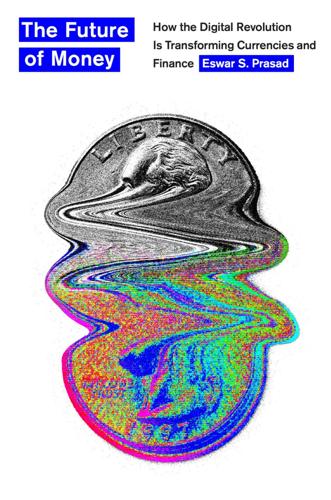
The Future of Money: How the Digital Revolution Is Transforming Currencies and Finance
by
Eswar S. Prasad
Published 27 Sep 2021
An additional 18.7 percent of US households (24.2 million households composed of about 49 million adults) were underbanked in 2017. The latter term refers to households that had, in the previous twelve months, used an “alternative financial services provider” for one of these products or services: money orders, check cashing, international remittances, payday loans, refund anticipation loans, rent-to-own services, pawnshop loans, or auto title loans. FDIC statistics on financial inclusion in the United States are available at Federal Deposit Insurance Corporation, FDIC National Survey of Unbanked and Underbanked Households, October 2018, https://economicinclusion.gov/downloads/2017_FDIC_Unbanked_Underbanked_HH_Survey_ExecSumm.pdf.
…
FDIC statistics on financial inclusion in the United States are available at Federal Deposit Insurance Corporation, FDIC National Survey of Unbanked and Underbanked Households, October 2018, https://economicinclusion.gov/downloads/2017_FDIC_Unbanked_Underbanked_HH_Survey_ExecSumm.pdf. The survey found that proportions of the unbanked and underbanked were higher among lower-income households, less educated households, younger households, Black and Hispanic households, working-age disabled households, and households with volatile income. The New York City Council took the legislative action on January 23, 2020. For details, see https://legistar.council.nyc.gov/Calendar.aspx. See also Ed Shanahan and Jeffery C. Mays, “New York City Stores Must Accept Cash, Council Says,” New York Times, January 24, 2020, https://www.nytimes.com/2020/01/23/nyregion/nyc-cashless-ban.html.
…
This is important because default risk is a significant concern; in a sample of 1.3 million loans approved on the platform, approximately 20 percent defaulted between 2007 and 2018. The company generates revenue from transaction fees (which range from 0 to 6 percent of the initial principal). It has also partnered with traditional banks, on whose behalf it originates loans and collects fees in the process. LendingClub has managed to penetrate many areas that are underbanked as a result of having a small number of banks and bank branches, perhaps because of low population density. It was also the first peer-to-peer lender to register its offering of a “pool of unsecured personal whole loans” as securities with the US Securities and Exchange Commission (SEC). Platforms such as LendingClub have had a sizable impact on one segment of the household credit market.

Frugal Innovation: How to Do Better With Less
by
Jaideep Prabhu Navi Radjou
Published 15 Feb 2015
For instance, according to the Federal Deposit Insurance Corporation (FDIC), over 68 million Americans – nearly one-quarter of the US population – have little, if any, access to financial services. Traditional financial institutions are not adequately meeting their unique needs. Yet, according to the Center for Financial Services Innovation (CFSI), underbanked Americans collectively earn around $1 trillion in annual income and represent an untapped market worth nearly $90 billion. With frugal products, they could be reached. As Vianney Mulliez, CEO of Auchan, a French international retail group, puts it:9 “There are many ‘emerging markets’ within Western economies that we are eager to serve.”
…
Or take Plastyc, a start-up that claims to put the “power of a bank in your cell phone” by providing affordable 24-hour access to FDIC-insured virtual bank accounts that can be accessed from any internet-enabled computer or mobile device. These accounts are tied to prepaid Visa cards; consumers cannot go overdrawn and they incur no late fees. Plastyc’s low-fee, no-frills, online banking services are appealing to the nearly 70 million underbanked, or unbanked, Americans who cannot afford to pay large bank fees. And in the sharing economy, firms such as Airbnb (sharing homes), RelayRides (sharing cars) and ParkatmyHouse (sharing parking spaces) are taking advantage of the internet and social media to enable ordinary people to monetise their idle household assets.
…
In June 2014, AmEx launched a Financial Innovation Lab, where researchers and counsellors work together to support credit building and savings; the lab’s results will be made publicly available. Through these multiple initiatives, AmEx is attempting to understand and solve a complex, multi-dimensional socio-economic problem. The unbanked and underbanked spend 10% of their $1 trillion disposable income on fees, the same amount as they spend on food. Schulman asks:13 “Imagine if you could turn loose almost $100 billion back into the economy?” Engage restless entrepreneurs, hackers and tinkerers Airbnb, an online short-let rental company, was launched in 2008 by Brian Chesky and Joe Gebbia, two young people with no experience of the hotel industry.
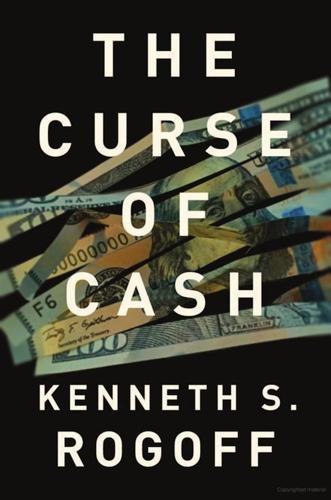
The Curse of Cash
by
Kenneth S Rogoff
Published 29 Aug 2016
Low-income households and individuals go without banks for various reasons, including the inability to meet minimum deposit requirements, monthly service fees, and lack of convenient access in lower-income neighborhoods. In the United States, more than 8% of households were un-banked in 2013, according to an FDIC survey.3 Another 20% were underbanked, meaning they also used alternative financial services outside the banking system, including prepaid cards, payday loans, pawn shops, and check-cashing services. More than 25% of adult Americans do not have a credit card. Unfortunately, the cost of not having bank access is high. Check-cashing services charge exorbitant fees; for immigrants and others who need to wire funds abroad and transfer money to relatives, the transaction costs can amount to 10–15% or more.
…
Review of Economic Studies 81 (2): 725–60. Farhi, Emmanuel, and Ivan Werning. 2016. “A Theory of Macroprudential Policies in the Presence of Nominal Rigidities” (May). Mimeo, Harvard University, Cambridge, MA. Forthcoming in Econometrica. Federal Deposit Insurance Corporation. 2014. “2013 FDIC National Survey of Unbanked and Underbanked Households.” Washington, DC. Available at https://www.fdic.gov/householdsurvey/. Federal Reserve Bank of Boston. 2012. “Diary of Consumer Payment Choice.” Boston. ———. 2013. “Survey of Consumer Payment Choice.” Boston. Federal Reserve Bank of San Francisco. 2004. “How Much Currency Is Circulating in the Economy, and How Much of It Is Counterfeit?”
…
See also Bank of England United Nations Office on Drugs and Crime, 69, 74, 240n34 United States: Automated Clearing House system, 103; Bitcoin, regulation of, 210; cash circulating, amount of, 31–33; corruption in, 70–71; cost in GDP of buying back all paper currency, 217; counterfeiting, efforts to suppress, 77–78; currency entering or leaving the country, requirement to report large amounts of, 41; currency/GDP ratio, 1948–2015, 33, 36–37; currency/GDP ratio, 1995, 46; currency held by consumers, 3, 49–52; currency of, international significance of, 15–16; currency per capita, 37–38, 40; currency usage, 53–54; discount rate cuts in response to recent crises, 131–32; double-digit inflation, 183; foreign holdings of currency, 39–42, 236n19; foreign holdings of currency, 1985–2015, 45; foreign holdings of currency, estimating, 42–45; gold standard, post–World War I adjustments to, 29; the government’s profit from printing money, 81–82 (see also seigniorage); illegal drug market, estimated size of, 69; inflationary periods in, 27–28; Kleptocracy Asset Recovery Initiative, 72; large-denomination notes, 3, 31; negative interest rates in response to the financial crisis, 123; New York Federal Reserve discount rates, 1929–1939, 128–29; nominal policy interest rates, 2000–2015, 130; $100 bills, rise in demand for, 32–33; $100 North Korean counterfeit “supernote,” 78; paper currency, profits from monopoly on, 217; paper currency in colonial, 26–27; paper currency phaseout, costs and benefits of, 88–89; paper currency supply in small bills, percentage of, 85; payments by instrument type, 54; payments per dollar amount per consumer, 54; phaseout of large-denomination paper currency, proposal for, 95; quantitative easing in, 140–42; revenue as a percentage of GDP, 2006–2015, 83–84; scanner data from retail transactions, 56–57; sexual exploitation in, 74; short-term market interest rates, 1929–1939, 129; tax evasion in, 60–61, 83; terrorism and efforts to tighten enforcement of money-laundering regulations, 77; unauthorized immigrants in, 75; the unbanked and underbanked in, 98; underground economy, estimated size of, 62–63; Volcker’s disinflation effort, 119 universal financial inclusion, 98–100 Velde, François R., 19, 234n13 Venezuela, 184 Vietnam, 191 Vissing-Jorgensen, Annette, 141 Volcker, Paul, 119, 189, 191 Wallace, Neil, 104–5, 225–26 Wallace conjecture, 105, 225–26 Walsh, Carl, 231 Wang, Zhu, 56 Weber, Guglielmo, 239n13 Weber, Warren E., 234n13 Werning, Ivan, 251n3 White, Walter, 240n27 White, William, 176 Williams, John C., 133, 244n11, 245n17 Wolman, Alexander, 56, 244n11, 255n9 Wonderful Wizard of Oz, The (Baum), 192 Woodford, Michael, 145, 227, 230, 243n9 Wu, Jing Cynthia, 244n5, 247n28 Xerxes (king of Persia), 18 Xia, Fan Dora, 244n5, 247n28 Xi Jinping (president of People’s Republic of China), 71 Xu Caihou, 71 Yellen, Janet, 229, 255n5 zero bound constraint, 4–5, 119–27; black hole, similarity to, 124; consumption taxes as approach to, 156–57; fiscal policy and, 249n12; forward guidance as approach to, 145–46; higher inflation targets as approach to, 147–51; historical experiences with, 128–32; macroeconomic stabilization policy and, 124–25; mitigating, options for, 125–27; monetary policy and, 123–24, 227–30; opportunistic fiscal policy as approach to, 154–56; previous experiences of, 122; quantitative easing as approach to (see quantitative easing); quantitative implications of, literature on, 132–35; reemergence of, reasons for, 120–22; relaxing the rigidity of the inflation-targeting framework as approach to, 152–54; targeting nominal GDP as approach to, 151–52.

The Truth Machine: The Blockchain and the Future of Everything
by
Paul Vigna
and
Michael J. Casey
Published 27 Feb 2018
CHAPTER SEVEN After a long multi-decade fight with the city: Jorge Salomón, “El barrio Charrúa, una pequeña Bolivia en el sur de Buenos Aires,” El País, February 12, 2016, http://www.elpaisonline.com/index.php/2013-01-15-14-16-26/sociedad/item/204708-el-barrio-charrua-una-pequena-bolivia-en-el-sur-de-buenos-aires. Hernando de Soto estimates that: Hernando de Soto, The Mystery of Capital: Why Capitalism Triumphs in the West and Fails Everywhere Else (Basic Books, 2000). 7.7 percent of the population is “unbanked,”: Lori London, “The Top 10 Unbanked and Underbanked Cities,” goEBT, March 29, 2017, https://www.goebt.com/the-top-10-unbanked-and-underbanked-cities/. For the more than 2 billion adults worldwide: Global Findex Database, World Bank, 2014, http://www.worldbank.org/en/programs/globalfindex. UN’s plan to eradicate global poverty: Sustainable Development Goals, United Nations, http://www.un.org/sustainabledevelopment/poverty/.
…
Either way, anything that adds transparency to the multi-faceted picture of people’s lives should help institutions lower the cost of financing and insuring them. It’s not just a developing world problem. In the United States, 7.7 percent of the population is “unbanked,” meaning they don’t have bank accounts, and 17.9 percent are considered “underbanked,” meaning they rely upon payday, rent-to-own services, and the like. In Baltimore, 14 percent of residents are unbanked. In Memphis, it’s nearly 17 percent. In Detroit and Miami, it’s 20 percent. There are plenty of middle-class people who are penalized by the inability to prove their good standing, too.
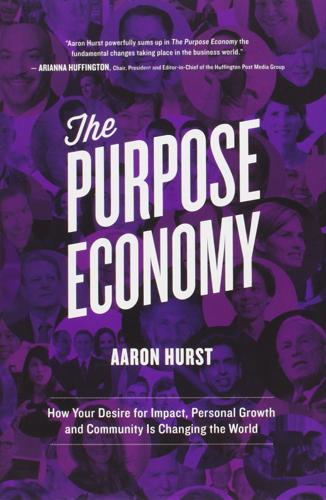
The Purpose Economy: How Your Desire for Impact, Personal Growth and Community Is Changing the World
by
Aaron Hurst
Published 31 Aug 2013
Online social networks, he figured, could enable people again to borrow money based on their character and standing in the community. In founding Lenddo, he not only saw the opportunity to create a more sustainable and sane form of banking, but also to serve the 2 billion people around the world who are currently “under-banked.” The future of personal and small business finance is social. By making banking social again and using technology to make it efficient, we can not only boost demand, but also increase the efficiency and reliability of underwriting and collections. By involving the community in deciding who gets a loan, it creates a selection bias, as people are more self-aware about the debt they should be taking on when it is transparent to their community.
…
By involving the community in deciding who gets a loan, it creates a selection bias, as people are more self-aware about the debt they should be taking on when it is transparent to their community. And when people’s repayments impact the ability of their friends and family to borrow, they are much more likely to make their payments. Lenddo now focuses on lending to the middle class in developing countries, a population that is under-banked but also lives in regions with flexible government regulations that enable the innovation. And while most of their loans are modest by American banking standards, a $500 loan can make the difference between an education or having the ability to start a business. Lenddo now has 400,000 members across 38 countries and boasts loan rates that are the same or lower than traditional lenders.
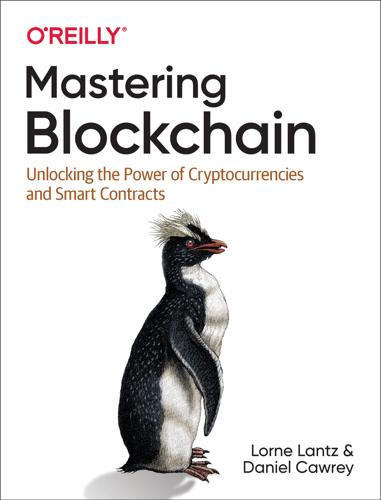
Mastering Blockchain: Unlocking the Power of Cryptocurrencies and Smart Contracts
by
Lorne Lantz
and
Daniel Cawrey
Published 8 Dec 2020
MoneyGram uses Ripple’s On-Demand Liquidity product to facilitate cheaper and faster cross-border payments. Stellar Launched in 2014, Stellar was founded by Jed McCaleb and Joyce Kim, who had both previously worked at Ripple. The Stellar protocol is supported by the 501(c)(3) nonprofit Stellar Development Foundation, created with the aim of providing a low-cost payment network for underbanked or unbanked individuals across the world. In the early days, Stellar used a similar consensus mechanism to Ripple’s. However, the Foundation changed the protocol in 2015, switching to SCP, a system devised by Stanford professor David Mazières. One of the reasons for switching from the Ripple-designed consensus mechanism was that the Stellar blockchain unexpectedly forked in 2014, creating two separate networks and causing problems with transactions.
…
After the departure of Joyce Kim, the Foundation began a long pivot, founding a company called Lightyear.io in 2017 (which became Interstellar in 2018 after acquiring the blockchain company Chain) to promote and encourage adoption of the protocol. Like Ripple, Stellar is focusing on cross-border payments, albeit with a more unbanked and underbanked bent, attempting to provide services to those who lack financial access. Scaling Blockchains In technology terms, scaling is the ability of a network to dynamically change resource allocation while improving or maintaining efficiency. Scaling has been a challenge as Bitcoin has grown: as more transactions end up on the blockchain, the network needs to continue providing a cheap and easy way to transact.
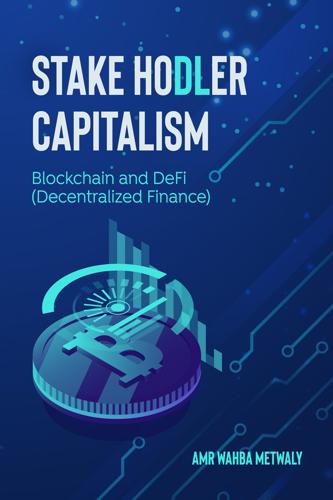
Stake Hodler Capitalism: Blockchain and DeFi
by
Amr Hazem Wahba Metwaly
Published 21 Mar 2021
Payments User-to-user payment is arguably the foundational use case of the DeFi domain and the blockchain ecosystem at large. Blockchain technology is wired so that users can safely and directly trade cryptocurrency without the presence of intermediaries. DeFi payment solutions build a more free economic system for the underbanked and unbanked populace and help big financial institutions streamlining market infrastructure and serve better wholesale and retail customers. Prediction markets Blockchain-based prediction markets impede the crowd's reasoning and help users vote and exchange value on the result of events.
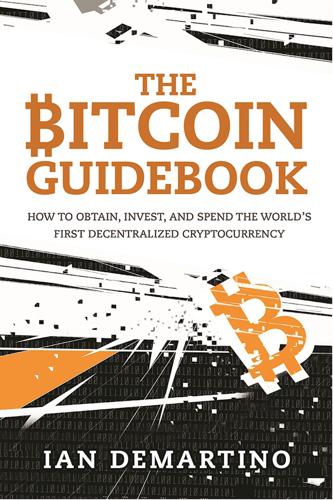
The Bitcoin Guidebook: How to Obtain, Invest, and Spend the World's First Decentralized Cryptocurrency
by
Ian Demartino
Published 2 Feb 2016
It can be hard for residents of the US or other first world countries to remember, but there are huge populations without basic access to banking services. As many as 2.5 billion people, or about half of the world’s adult population, are unbanked with even more classified as underbanked. Bitcoin can provide these services for the unbanked—and with third-party tools, can already offer a lot to the underbanked.11 When people start receiving money from their emigrant family members without a double-digit fee, it stands to reason that some of them will become interested in Bitcoin. As they become more knowledgeable about Bitcoin, they might see its utility for storing value rather than simply as a mechanism for transferring value.
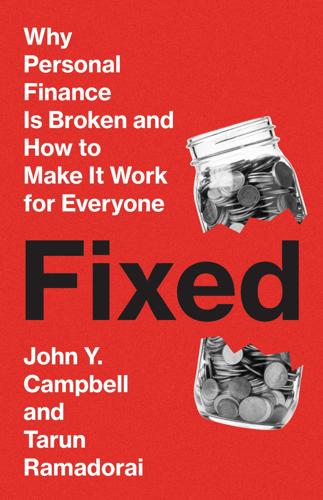
Fixed: Why Personal Finance is Broken and How to Make it Work for Everyone
by
John Y. Campbell
and
Tarun Ramadorai
Published 25 Jul 2025
See Stacy Cowley, “Consumer Bureau proposes overdraft fee limits for large banks,” New York Times, January 17, 2024, https://www.nytimes.com/2024/01/17/business/cfpb-bank-overdraft-fees-rule.html. 36. See Marco Di Maggio, Angela T. Ma, and Emily Williams, “In the red: Overdrafts, payday lending and the underbanked” (NBER working paper no. 28242, 2020). 37. For the proposed CFPB regulation, see “CFPB proposes rule to close bank overdraft loophole that costs Americans billions each year in junk fees,” Consumer Financial Protection Bureau, news release, January 17, 2024, https://www.consumerfinance.gov/about-us/newsroom/cfpb-proposes-rule-to-close-bank-overdraft-loophole-that-costs-americans-billions-each-year-in-junk-fees/. 38.
…
See Consumer Financial Protection Bureau, “CFPB bans excessive credit card late fees, lowers typical fee from $32 to $8,” March 5, 2024, https://www.consumerfinance.gov/about-us/newsroom/cfpb-bans-excessive-credit-card-late-fees-lowers-typical-fee-from-32-to-8/; and “CFPB proposes rule to close bank overdraft loophole that costs Americans billions each year in junk fees,” January 17, 2024, https://www.consumerfinance.gov/about-us/newsroom/cfpb-proposes-rule-to-close-bank-overdraft-loophole-that-costs-americans-billions-each-year-in-junk-fees/. The reduction in credit card late fees was blocked in court in 2024, and these and other CFPB policies are likely to be reversed in the second Trump administration. See Marco Di Maggio, Angela Ma, and Emily Williams, “In the red: Overdrafts, payday lending, and the underbanked” (unpublished paper), for evidence on the impact of overdraft fees on unwary customers. We discussed this paper in chapter 4. 59. Ali Hortaçsu and Chad Syverson, “Product differentiation, search costs, and competition in the mutual fund industry: A case study of S&P 500 index funds,” Quarterly Journal of Economics 119 (2004): 403–456. 60.
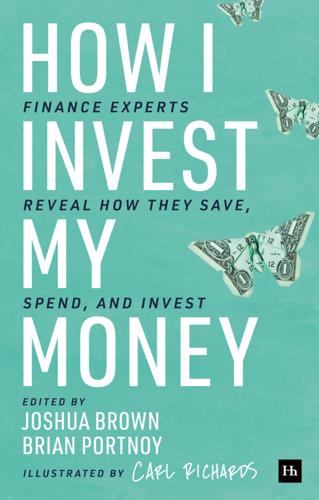
How I Invest My Money: Finance Experts Reveal How They Save, Spend, and Invest
by
Brian Portnoy
and
Joshua Brown
Published 17 Nov 2020
Tyrone is a proud first generation high school graduate whose life’s mission is to be a voice for the voiceless. He is passionate about financial literacy, ending childhood hunger, homelessness, and poverty. He currently resides in Woodbridge, NJ. I grew up in a financially illiterate home which dealt some hard financial lessons. At times we were unbanked and at others underbanked thanks to check cashing places. Scratch off tickets saved us plenty of days when money was short, which is why to this day I find it hard to curse the lottery. I was 26 before I knew that the stock market even existed. This wasn’t for lack of exposure, I guess. When I was in college I had a teammate that used to watch these green and red numbers float across the bottom of the TV screen before practice.
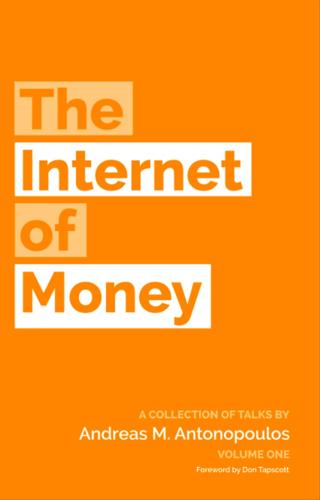
The Internet of Money
by
Andreas M. Antonopoulos
Published 28 Aug 2016
"Consider what we’ve been talking about: financial transactions, banking, payments. It’s a fancy credit card. It’s Paypal, basically. It’s a global Paypal. But it’s not. It’s something completely, radically different." Today, there are 3 billion people with no banking facilities whatsoever. Three billion more people—“underbanked,” as we call them—without any access to international credit or finance. You or I can go to a brokerage website right now and within 24 hours have a US-dollar-denominated account that can trade on the Tokyo stock exchange. That is privilege. That is a facility afforded to less than a billion people in the world.
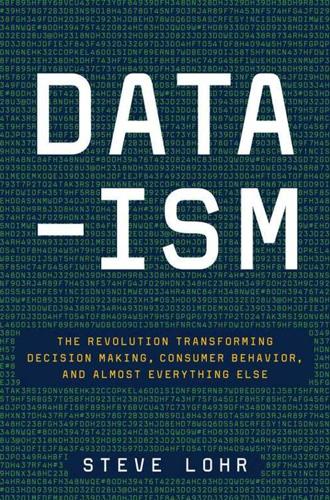
Data-Ism: The Revolution Transforming Decision Making, Consumer Behavior, and Almost Everything Else
by
Steve Lohr
Published 10 Mar 2015
Consider start-up ZestFinance: Douglas Merrill’s descriptions and quotes come from an interview on Oct. 30, 2013. fees paid by payday borrowers: For the average borrowers and amounts outstanding, Merrill did his own current estimates as of late 2013. But he also referenced the Federal Deposit Insurance Corporation’s report in September 2012, 2011 FDIC National Survey of Unbanked and Underbanked Households. http://www.fdic.gov/householdsurvey/2012_unbankedreport.pdf. And he also referred to a July 2012 report by the Pew Charitable Trusts, Payday Lending in America: Who Borrows, Where They Borrow, and Why. http://www.pewtrusts.org/en/research-and-analysis/reports/2012/07/19/who-borrows-where-they-borrow-and-why.
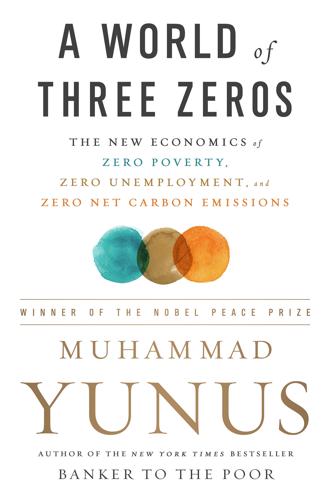
A World of Three Zeros: The New Economics of Zero Poverty, Zero Unemployment, and Zero Carbon Emissions
by
Muhammad Yunus
Published 25 Sep 2017
I have been advocating for years to create new banking laws to allow the setting up of banks for the poor as opposed to the present laws focused on creating banks for the rich. Doing patchwork on the existing laws to allow noncollateralized lending to the unbanked can have very little success—especially while the need for banking for the unbanked and underbanked is so vast. I try to present the case by pointing out that financial services are the oxygen of individual economic life. This oxygen is delivered extremely generously to the topmost people; in fact, they enjoy a kind of economic fire that sucks up nearly all the oxygen that is available. In this way the financial system helps cause the extreme concentration of wealth in the world.

Broken Markets: A User's Guide to the Post-Finance Economy
by
Kevin Mellyn
Published 18 Jun 2012
Inhibiting banks from investing in this revolution will not halt progress entirely, but it will keep much of it in unregulated corners of the universe. Nowhere is this truer than in the critical arena of consumer payments. 69 70 Chapter 3 | The Economic Consequences of Financial Regulation Unbanking the Banked For a high-income industrial society, America already has a staggering number of unbanked or underbanked households, estimated by the FDIC at a quarter of the total economically active population. Some of this reflects the high level of recent immigration, legal and undocumented, and the number of households living below the poverty line—both factors that set America apart from other rich countries and always has.
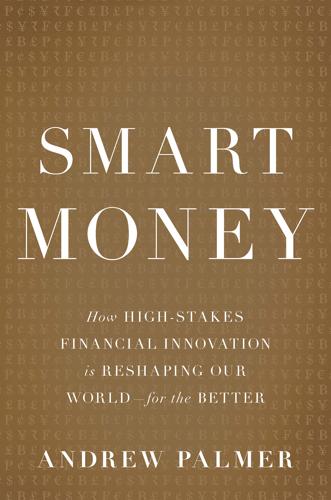
Smart Money: How High-Stakes Financial Innovation Is Reshaping Our WorldÑFor the Better
by
Andrew Palmer
Published 13 Apr 2015
“Withering Away,” Economist, May 19, 2012. 4. Harry DeAngelo and René Stulz, “Why High Leverage Is Optimal for Banks” (NBER Working Paper 19139, August 2013). NOTES TO CHAPTER 8 1. Victor Stango, “Are Payday Lending Markets Competitive?” Regulation (Fall 2012); “National Survey of Unbanked and Underbanked Households” (Federal Deposit Insurance Corporation, 2011). 2. “Margin Calls,” Economist, February 16, 2013. 3. Meta Brown et al., “The Financial Crisis at the Kitchen Table: Trends in Household Debt and Credit,” Current Issues in Economics and Finance 19 (2013). 4. Atif Mian and Amir Sufi, “The Consequences of Mortgage Credit Expansion: Evidence from the 2007 Mortgage Default Crisis” (NBER Working Paper 13936, April 2008). 5.
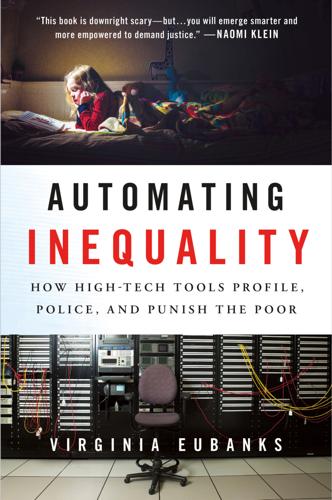
Automating Inequality
by
Virginia Eubanks
While the algorithms that drive this target-marketing don’t explicitly use race to make decisions—a practice outlawed by the Fair Housing Act of 1968—a category like “Ethnic Second-City Strugglers” is clearly a proxy for both race and class.6 Disadvantaged communities are then targeted for subprime lending, payday loans, or other exploitative financial products. Reverse redlining is rational discrimination. It is not discriminatory in the sense that it relies on hostile choices being made by racist or classist individuals. In fact, it is often characterized as inclusionary: it provides access to financial products in “underbanked” neighborhoods. But its outwardly neutral classifications mask discriminatory outcomes that rob whole communities of wealth, compounding cumulative disadvantage. The digital poorhouse replaces the sometimes-biased decision-making of frontline social workers with the rational discrimination of high-tech tools.
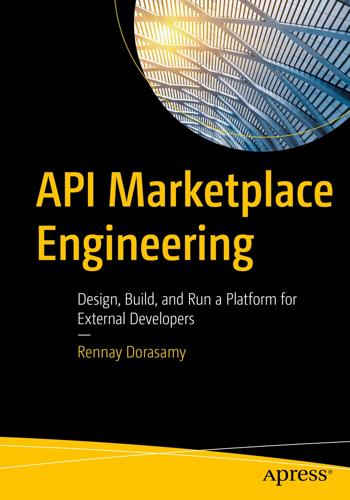
API Marketplace Engineering: Design, Build, and Run a Platform for External Developers
by
Rennay Dorasamy
Published 2 Dec 2021
Promotion of financial inclusion, competition and innovation, and cost-effectiveness: Open Banking may help to create a level playing field for all stakeholders to offer services and solutions. It should allow banking services to a wide range of customers – from offering high-earners a personalized investment product to assisting underbanked customers to access banking services. From an implementation perspective, smaller banks and third parties should be able to participate without significant investment capital and technological infrastructure. Terminology When navigating Open Banking regulatory frameworks, you may encounter many new terms and classifications.
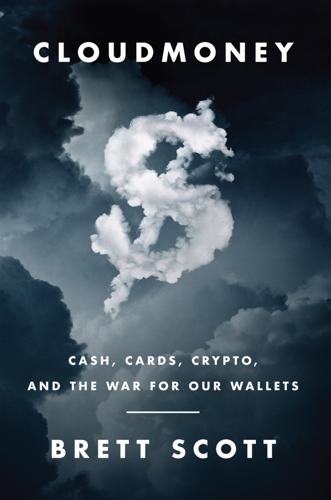
Cloudmoney: Cash, Cards, Crypto, and the War for Our Wallets
by
Brett Scott
Published 4 Jul 2022
They assert that it is those living in informal economies around the world who yearn to leave it behind, and upgrade to the lifestyle of the digitally connected urban professional. The ambiguities of being ‘banked’ Organisations like the Better Than Cash Alliance position themselves as players within the broader field of financial inclusion. Practitioners in this field often use the term ‘unbanked’ (or ‘underbanked’) to refer to those who do not use formal financial institutions in their day-to-day lives. Someone living in a small rural town might think it normal to ride a bicycle to an outpost store where they use cash. Through institutional eyes, however, the transport could be characterised as ‘Un-Ubered’, the commercial setting as ‘Un-Amazoned’, and the person as ‘unbanked’.
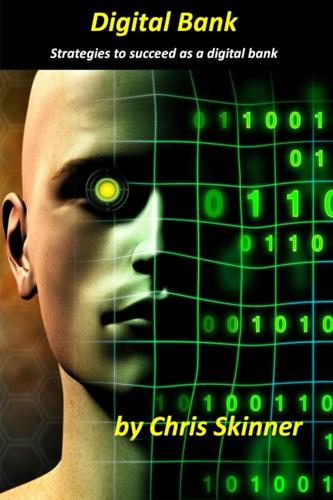
Digital Bank: Strategies for Launching or Becoming a Digital Bank
by
Chris Skinner
Published 27 Aug 2013
The discussion of their success is covered later in this journal in my interview with John Maynard, but the key comment he makes is that since M-PESA launched in 2007, the number of people who now have bank accounts with the traditional banks has almost quadrupled. The reason? As mobile money provides inclusion for the unbanked and underbanked, they become recognised as financially viable citizens and therefore for financial inclusion by being banked. Similarly, when banks find they cannot offer services to customers through this credit crisis that were previously offered, such as credit, other services gain traction. This is clear from the rise of crowdfunding platforms like kickstarter and social lending services like Zopa, Smava and Prosper.
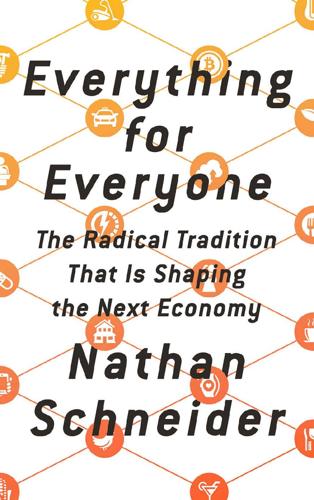
Everything for Everyone: The Radical Tradition That Is Shaping the Next Economy
by
Nathan Schneider
Published 10 Sep 2018
This was unquestionably a breakthrough. For the first time, the technology underlying Bitcoin made possible a secure, decentralized, open-source financial network. Users wouldn’t have to trust any bank or government, just the software. Boosters announced that financial freedom would soon be at the fingertips of the previously under-banked, and people anywhere in the world could send money over the internet with negligible overhead. Nakamoto prophesied in that 2009 forum post, “It takes advantage of the nature of information being easy to spread but hard to stifle.” In essence, Bitcoin is a list, held in common among its users—a list of transactions, a record of which account holds what.
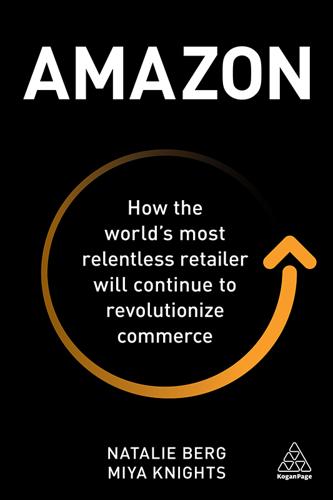
Amazon: How the World’s Most Relentless Retailer Will Continue to Revolutionize Commerce
by
Natalie Berg
and
Miya Knights
Published 28 Jan 2019
For example, it launched a pay-monthly Prime membership scheme in 2016. For shoppers, this option actually works out more expensive on an annual basis ($156 versus $119) but provides an alternative way to access Amazon if customers are unwilling or unable to pay the annual fee in one lump sum. Meanwhile, Amazon has homed in on the unbanked/underbanked consumer by launching a discounted Prime membership for those receiving government assistance, as well as Amazon Cash, a scheme that allows shoppers to deposit cash into their Amazon account by scanning a barcode at participating stores. This has since been rolled out in the UK as well, where it is branded Top Up.

Easy Money: Cryptocurrency, Casino Capitalism, and the Golden Age of Fraud
by
Ben McKenzie
and
Jacob Silverman
Published 17 Jul 2023
I got all sorts of hate from dudes with laser eyes in their profiles. I did not anticipate SBF himself would respond. “BUT WHAT IF IT GOES UP IN PRICE LATER??? DID YOU THINK ABOUT THAT?!?!!!?!? (but seriously–I totally agree that crypto needs more oversight and some cleaning up! I also think it presents huge opportunities for payments, underbanked, equitable access, and market structure.)” I had, in fact, considered the possibility of “number go up.” It was central to my understanding of what crypto was all about: gambling. I had been following Sam on Twitter, and he started following me back. I DMed him. It was the start of a periodic conversation that would continue for months.
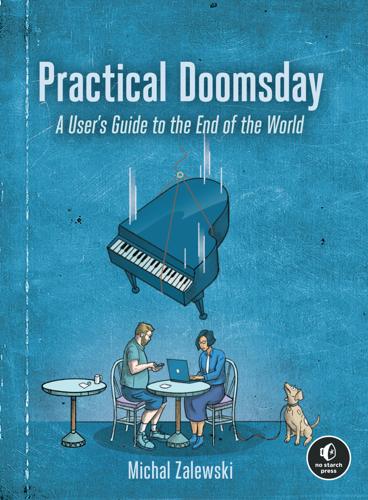
Practical Doomsday: A User's Guide to the End of the World
by
Michal Zalewski
Published 11 Jan 2022
In the United States, many large-denomination bills, such as the $1,000 banknote, were effectively removed from circulation and are probably not coming back. Any commercial cash transactions over $10,000 need to be reported to the Internal Revenue Service on Form 8300 too. Meanwhile, in parts of Europe, it’s flat out illegal to use paper money for most transactions in excess of a threshold as low as €1,000.17 As the percentage of underbanked populations around the world is shrinking rapidly, some economists and policymakers are openly talking about a cashless future where no transaction can escape government oversight. Diversified Bank Deposits Although not completely risk-free, money in the bank is still a valuable tool. It provides instantaneous and convenient liquidity, and in perhaps nine out of ten economic crises, holds up value very well.

The Industries of the Future
by
Alec Ross
Published 2 Feb 2016
Zac argues that the financial industry has been hampered by antiquated data systems, which have made them opaque to customers. “Banks and hospitals are the only places in the world where you walk into them and you don’t know what they sell. There is no list of products. There is no list of prices. So, if you are an underbanked person in Oakland and you walk into a local branch of, say, Wells Fargo, there’s columns, there’s carpeting, there’s desks. But you have no idea what to do. It is no surprise to me that you would be intimidated and have trouble opening a bank account. On the other side of the world there may not even be established banks.

The Future Is Faster Than You Think: How Converging Technologies Are Transforming Business, Industries, and Our Lives
by
Peter H. Diamandis
and
Steven Kotler
Published 28 Jan 2020
With AI, huge groups of people can come together, share financial information, and pool risk, becoming the peer-to-peer market now known as “crowdlending.” Prosper, Funding Circle, and LendingTree are three examples in a market expected to grow from $26.16 billion in 2015 to $897.85 billion by 2024. A different example is the Smart Finance Group. Created in 2013 to serve China’s massive unbanked and underbanked population, Smart Finance uses an AI to comb a user’s personal data—social media data, smartphone data, educational and employment history, etc.—to generate a reliable credit score nearly instantly. With this method, they can approve a peer-to-peer loan in under eight seconds, including microloans to the unbanked.
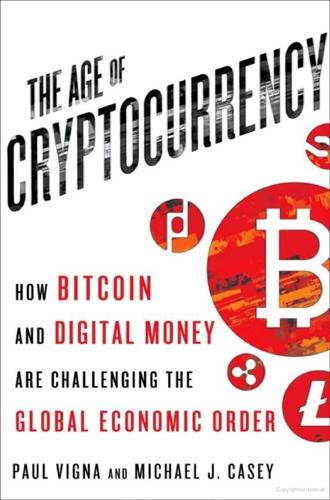
The Age of Cryptocurrency: How Bitcoin and Digital Money Are Challenging the Global Economic Order
by
Paul Vigna
and
Michael J. Casey
Published 27 Jan 2015
The problem isn’t limited to the emerging markets. In Canada, the United Kingdom, Germany, and Australia, the proportion of people above the age of fifteen with a bank account ranges from 96 percent to 99 percent. But head to the United States, and the figure slips to 88 percent. Add in a separate “underbanked” category—that is, those who may have a bank account, but also are driven to “nontraditional” banking sources such as check cashers or payday loans—and the percentage of the American population with insufficient access to the financial system exceeds 30 percent. Whereas China has delivered bank accounts to 64 percent of its people, in Argentina, despite Buenos Aires’ large, educated, and internationally savvy middle-class population, just 33 percent of the country is banked, a figure less even than India’s 35 percent.
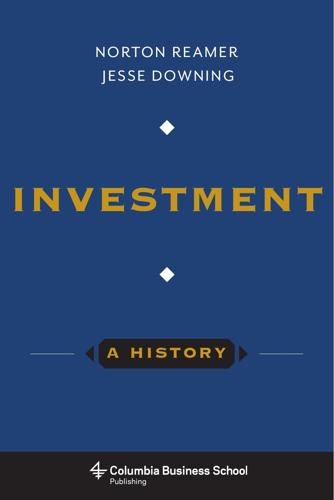
Investment: A History
by
Norton Reamer
and
Jesse Downing
Published 19 Feb 2016
Over time, more public equities have been held by insurance companies (growing at a 5 percent annual clip from 2000 to 2010).41 The establishment of insurance companies as investment vehicles is directly linked to the vast expansion of individuals who are participating in life insurance, savings, and investment activities. Savings Accounts Chapter 3 discussed evidence of life-cycle savings by female servants in the context of retirement. Here, the analysis broadens to the history of savings vehicles. Savings societies allowed the previously underbanked (most notably, the working poor) to access the benefits of a depository institution, and they grew in prominence in the early nineteenth century. The Philadelphia Saving Fund Society was the first American mutual savings bank, commencing its dealings in 1816. The first chartered US mutual savings bank was the Provident Institution for Savings in Boston, which began serving the public that same year.
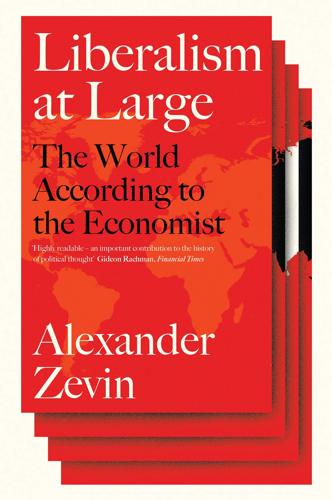
Liberalism at Large: The World According to the Economist
by
Alex Zevin
Published 12 Nov 2019
In red, white and black, the cover read ‘Pro Logo’, and savaged the Canadian activist Naomi Klein for her ‘utterly wrong-headed’ No Logo (1999), the best-selling ‘bible of the anti-globalisation movement’.49 For his part, Emmott spied untrammelled vistas for financial innovation until the end. In his last signed piece in 2006, he hailed US banks for entering sectors served only by payday lenders and pawnbrokers. Citibank signed an agreement with 7-Eleven to put cash machines in 5,500 stores, while credit card companies ‘targeted the unbanked and under-banked’ – poor minorities and immigrants, who stood to gain from access to cheaper credit. (Banks anticipated culling $9 billion in fees from them, and that was ‘before any cross-selling of other products’.) The subprime mortgage crisis hit the next year. Among the community banks Emmott cited as paragons, just one limped into 2012.50 Yet the crash barely checked his stride.